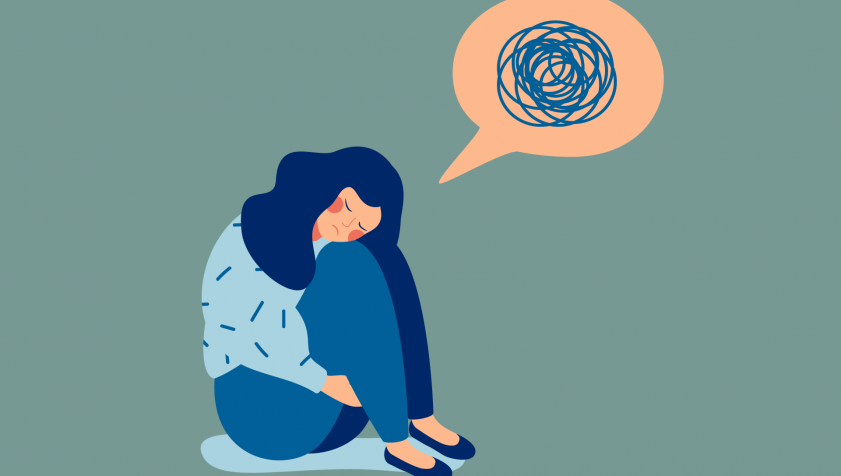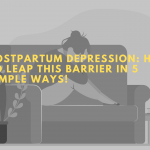There is a multitude of situations in life where we are met with scenarios that cause us stress and throw us off balance, normally most of us recover soon and are back with the same energy and zeal. Some people find it harder to regain control of life, they have an elevated response to such events and require psychological intervention to get back on feet.
In this four-part series dedicated to developing an understanding of Generalized Anxiety Disorder (GAD), we will examine the various aspects of GAD. So without any further ado let’s dive right in!

WHAT IS GAD?
Occasionally we all worry about ordinary things of life. The weather, our health, our family, money, the traffic on our way home from work and pets. It is a part of life, nothing new. But the ones who are suffering from GAD find it pretty difficult to control their worrying. As the definition laid by NIMH, “Generalized Anxiety Disorder (GAD) is characterized by persistent and excessive worry about a number of different things”.
They worry excessively about, health, money, family, life, career or other issues to the extent that it renders their mind in a lasting state of confusion and stress. They worry more than required or warranted for issues that aren’t that serious or even worse issues that they conjure up in their mind. Now, a difference arises between GAD and being stressed- people suffering from GAD are much likely to panic and get anxiety attacks in situations where regular people show mild symptoms of being stressed.
Sometimes even getting through the day triggers anxiety. People don’t have any control over anxiety and don’t realize they have been suffering from this illness. Some even believe that worrying can ease the situations they are going through and do not stop.
In most cases, GAD is diagnosed in an individual when their symptoms of anxiety last for about six months and have three or more symptoms. That time period is ample enough for normal people to get back to regular life while a person with GAD shall still be in vicious jaws of GAD.
STATISTICS
About 4% of the total population goes through GAD once in their lives. Demographics show that GAD is twice as more likely to affect women than it affects men. Some reasons are also given as women are more likely to suffer the brunt of physical/ sexual abuse than men and are more targeted than men at the workplace as well. GAD also affects 6.8 million people or 3.1% of the U.S.A population at any time in the year. In the U.K., alone 5.9 percent of people were affected by GAD in 2019. In Australia, 3%, Canada 2.5% and in India about 9% of the total population suffers from GAD. People from lower-income groups and those who seem to have lower self-esteem have a higher risk of developing GAD.

TREATMENT
Various types of treatment procedures can help people who are suffering from GAD. Emotional support from family and interpersonal therapy can also help. CBT also has been refined over time and research so as to specifically target the thought patterns that trigger GAD, like overthinking, an overactive imagination and over preparation. Mindfulness meditation and Acceptance Commitment Therapy has been able to provide some help to those who have been diagnosed with GAD. The purpose of all kinds of therapies that are available is to mend the ways people handle their anxiety and help them to be not afraid of their anxiety, to enable them to be able to make decisions in face of developing anxiety. CBT has also modified to suit teenagers and children. Relaxation, meditation, journaling, yoga, exercise has also helped people.
WHAT IS IT LIKE TO HAVE GAD?
Following is the first-hand account of an individual who was suffering from GAD, “I was worried all the time and felt nervous. My family told me that there were no signs of problems, but I still felt upset. I dreaded going to work because I couldn’t keep my mind focused. I was having trouble falling asleep at night and was irritated at my family all the time.
I saw my doctor and explained my constant worries. My doctor sent me to someone who knows about GAD. Now I am working with a counselor to cope better with my anxiety. I had to work hard, but I feel better. I’m glad I made that first call to my doctor”
The symptoms of GAD appear to be subtle in ways that there’s a blurry distinction between GAD and regular stresses. Doctors need to consider time and various other symptoms in mind while diagnosing the disease. A large portion of the human population also gets this illness sometime in their lives. However, it is important to note that GAD is also a facet of depression and generally considered a precursor of depression. It does not necessarily mean that if you have Gad you’re bound to have depression as well, there are exceptions as well.
With this, we’ve effectively completed the general overview of General Anxiety Disorder and will be discussing the causes, symptoms, and treatments in upcoming posts in this series. Thank you for reading, we’ll see you next time.








